- Potassium Deficiency in Apple Trees
- Symptoms
- Causes
- Treatment and Prevention
- Conclusion
- Symptoms of Potassium Deficiency in Apple Trees
- Foliage Symptoms
- Fruit Symptoms
- Growth Symptoms
- Root Symptoms
- Identifying Potassium Deficiency
- Foliage Symptoms
- Fruit Symptoms
- Soil Testing
- Conclusion
- Causes of Potassium Deficiency
- Testing Soil for Potassium Levels
- Correcting Potassium Deficiency
- Fertilizing Apple Trees with Potassium
- Preventing Potassium Deficiency in Apple Trees
- 1. Soil Testing
- 2. Fertilizer Application
- 3. Mulching
- 4. Proper Irrigation
- 5. Crop Rotation
- 6. Pruning and Thinning
- 7. Monitor and Adjust
- Conclusion
- Question-answer:
- What are the signs of potassium deficiency in apple trees?
- How can I tell if my apple tree has a potassium deficiency?
- What causes potassium deficiency in apple trees?
- How can I correct potassium deficiency in my apple trees?
- Can potassium deficiency in apple trees be prevented?
- What are some other nutrients that apple trees require?
- Video: A Beginners Guide: Nutrient Deficiency
Apple trees are a popular choice for home gardeners and commercial orchards alike, providing delicious fruit and a beautiful addition to the landscape. However, like any plant, apple trees require certain nutrients to thrive and produce healthy crops. One essential nutrient for apple trees is potassium.
Potassium plays a vital role in various physiological processes within apple trees, including water and nutrient uptake, enzyme activation, and protein synthesis. A deficiency in potassium can have severe consequences for the health and productivity of apple trees, leading to stunted growth, reduced fruit size and quality, and increased susceptibility to diseases and pests.
Identifying potassium deficiency in apple trees can be done through careful observation of the tree’s leaves and fruit. In the early stages of deficiency, leaves may show marginal scorching or yellowing, particularly along the edges. As the deficiency progresses, the leaves may become smaller and develop necrotic spots. Additionally, the fruit may be smaller in size and lack flavor.
To correct a potassium deficiency in apple trees, it is essential to supplement the soil with the necessary nutrients. This can be done through the application of potassium fertilizers, such as potassium chloride or potassium sulfate. It is important to follow the recommended dosage and application guidelines to avoid over-fertilization, which can lead to other nutrient imbalances.
In addition to fertilizer application, it is also important to ensure proper irrigation and drainage to prevent nutrient leaching and root suffocation. Regular soil testing can help monitor nutrient levels and adjust fertilization practices accordingly. By addressing potassium deficiencies promptly and providing the necessary care, apple tree growers can ensure healthy and productive trees for years to come.
Potassium Deficiency in Apple Trees
Potassium deficiency is a common issue in apple trees that can have negative effects on tree health and fruit production. It occurs when the tree does not receive enough available potassium from the soil, leading to various symptoms and growth problems.
Symptoms
- Leaf discoloration: One of the early signs of potassium deficiency is the appearance of yellow or bronze spots on the leaves. Over time, the discoloration can spread and affect larger areas of the leaves.
- Leaf curling: Another symptom is the curling of the leaf edges or the entire leaf. This can give the leaves a distorted appearance.
- Stunted growth: Potassium deficiency can also result in reduced growth, both in terms of tree height and overall size. The affected trees may be shorter and have smaller leaves and fruits.
- Poor fruit quality: The deficiency can affect the quality of the fruit, leading to smaller size, reduced sweetness, and increased susceptibility to diseases.
Causes
There are several factors that can contribute to potassium deficiency in apple trees:
- Low soil potassium levels: If the soil has low levels of available potassium, the tree may not be able to uptake enough to meet its needs.
- Excessive nitrogen: High levels of nitrogen in the soil can inhibit the uptake of potassium by the tree, leading to deficiency.
- Imbalanced soil pH: Extreme pH levels, either acidic or alkaline, can affect the availability of potassium to the tree.
- Excessive rainfall or irrigation: Excessive water can leach potassium out of the soil, making it less available to the tree.
Treatment and Prevention
To address potassium deficiency in apple trees, several management practices can be implemented:
- Soil testing: Regular soil testing can help identify potassium deficiencies and guide appropriate fertilization.
- Potassium fertilizer: Adding potassium-rich fertilizers, such as sulfate of potash or muriate of potash, can help replenish soil potassium levels.
- Balanced fertilization: Ensuring a balanced nutrient supply, including adequate levels of potassium and other essential nutrients, can help prevent deficiency.
- Proper irrigation and drainage: Avoiding excessive irrigation or poor drainage can help maintain proper potassium levels in the soil.
- Monitoring and adjusting pH: Regularly monitoring and adjusting soil pH can help optimize potassium availability.
Conclusion
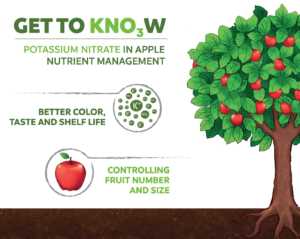
Potassium deficiency can have detrimental effects on apple trees and their fruit production. By recognizing the symptoms and implementing appropriate management practices, such as soil testing and balanced fertilization, potassium deficiency can be identified, corrected, and prevented, ensuring the health and productivity of apple trees.
Symptoms of Potassium Deficiency in Apple Trees
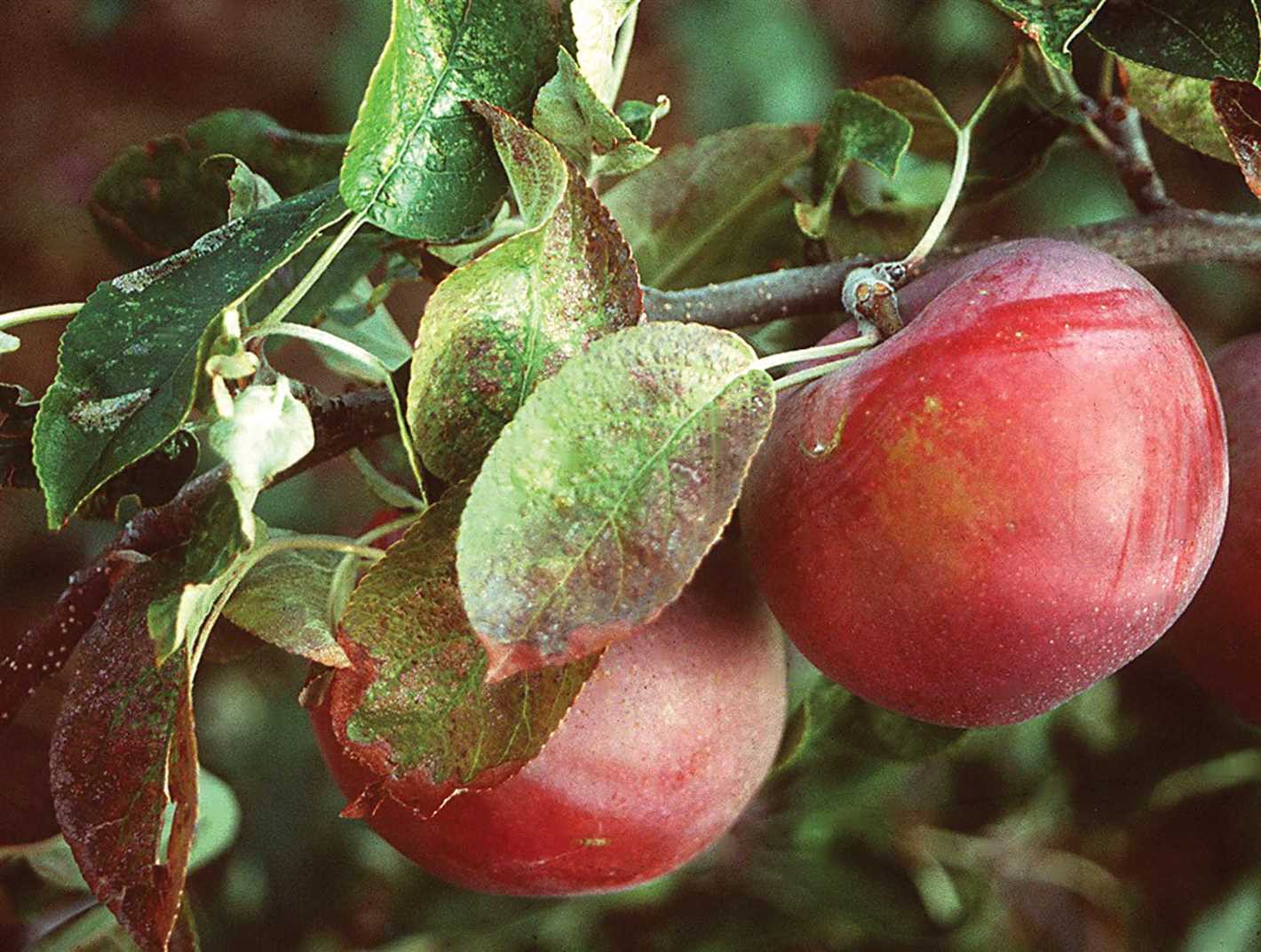
Potassium deficiency in apple trees can have a negative impact on their overall health and productivity. It is important to be able to identify the symptoms of potassium deficiency in order to take appropriate corrective measures.
Foliage Symptoms
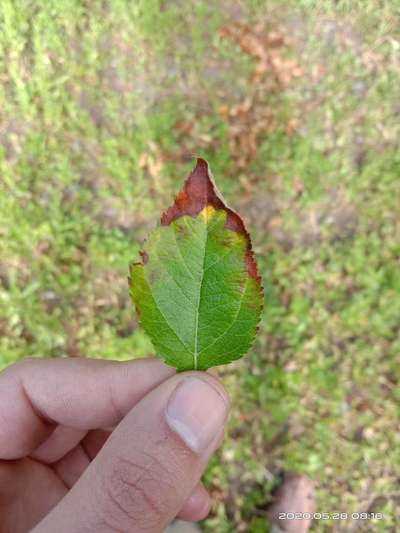
One of the most noticeable symptoms of potassium deficiency in apple trees is the development of yellowing or bronzing of the foliage. This typically occurs on the edges of older leaves, and the discoloration may gradually spread towards the center of the leaf over time.
In addition to yellowing or bronzing, the affected leaves may also show signs of scorching or browning along the edges. This can result in a crinkled or curled appearance of the leaves.
Fruit Symptoms
Potassium deficiency can also impact the quality of the fruit produced by apple trees. Fruits may exhibit smaller sizes, uneven ripening, and a decrease in sugar content. In severe cases, fruit cracking and browning may occur, making them unmarketable.
Growth Symptoms
Apple trees with potassium deficiency may exhibit stunted growth and reduced vigor. The branches and twigs may become weak and brittle, making them more susceptible to damage from wind or disease. This can lead to overall poor tree structure and decreased productivity.
Root Symptoms
Although not easily observable, potassium deficiency can also affect the roots of apple trees. The roots may appear underdeveloped or have a reduced ability to take up water and nutrients from the soil. This can further exacerbate the above-ground symptoms and compromise the tree’s overall health.
| Symptom | Description |
|---|---|
| Yellowing or bronzing of foliage | Discoloration of older leaves, starting from the edges |
| Scorching or browning of foliage | Browning along the edges of leaves, leading to a crinkled or curled appearance |
| Smaller and unevenly ripened fruits | Decreased fruit size, uneven ripening, and reduced sugar content |
| Fruit cracking and browning | Cracking and browning of the fruit, making them unsuitable for sale |
| Stunted growth and reduced vigor | Weaker branches and twigs, poor tree structure, and decreased productivity |
| Underdeveloped or compromised roots | Roots may appear underdeveloped and have reduced nutrient uptake capabilities |
Recognizing these symptoms and promptly addressing potassium deficiency in apple trees can help restore their health and promote better fruit production.
Identifying Potassium Deficiency
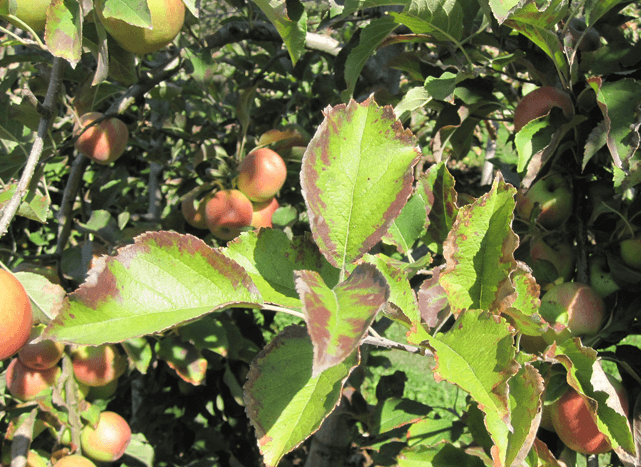
Potassium deficiency in apple trees can lead to various symptoms that may affect the overall health and productivity of the tree. It is important to be able to identify these symptoms in order to take appropriate measures to correct the deficiency.
Foliage Symptoms
One of the first signs of potassium deficiency in apple trees is the appearance of foliage symptoms. These symptoms typically appear on older leaves first and then progress to younger leaves if the deficiency is not addressed.
Some common foliage symptoms of potassium deficiency include:
- Yellowing or chlorosis of leaf margins or tips
- Leaf curling
- Leaf scorching
- Leaf necrosis (death of leaf tissue)
It is important to note that these symptoms may also be caused by other nutrient deficiencies or environmental stresses, so additional diagnostic tests may be needed to confirm potassium deficiency.
Fruit Symptoms
Potassium deficiency can also manifest itself in the fruit of apple trees. The following fruit symptoms may indicate a deficiency:
- Small fruit size
- Poor fruit coloration
- Fruit cracking
- Fruit with dry corky patches
- Irregularly shaped fruit
Again, it is important to note that these symptoms may also be caused by other factors, so proper diagnosis is crucial.
Soil Testing
In order to confirm potassium deficiency in apple trees, soil testing can be conducted. A soil test will analyze the nutrient levels in the soil and determine if there is a deficiency. This test will provide specific recommendations for correcting the deficiency, such as applying potassium fertilizer.
Conclusion
Identifying potassium deficiency in apple trees is crucial for maintaining tree health and productivity. By observing foliage and fruit symptoms and conducting soil testing, it is possible to diagnose and address potassium deficiency effectively.
Causes of Potassium Deficiency
Potassium deficiency in apple trees can be caused by several factors, including:
- Poor soil quality: Apple trees require well-drained soil with a pH between 6.0 and 7.0. If the soil is too acidic or alkaline, it can hinder the uptake of potassium.
- Excessive rainfall: Heavy rainfall can wash away nutrients, including potassium, from the soil. This can lead to deficiencies in apple trees.
- High nitrogen levels: When nitrogen levels are too high in the soil, it can lead to an imbalance in nutrient uptake, including potassium. This can occur when excessive amounts of nitrogen-based fertilizers are used.
- Poor root health: If the roots of apple trees are damaged or diseased, they may not be able to efficiently uptake potassium from the soil.
- Competition from weeds: Weeds can compete with apple trees for nutrients, including potassium. If weeds are not properly controlled, they can deplete the available potassium in the soil.
- Excessive pruning: Over-pruning apple trees can lead to reduced potassium levels. Pruning should be done judiciously to maintain a healthy balance of nutrients in the tree.
It is important for apple tree growers to be aware of these potential causes of potassium deficiency in order to prevent and address the issue in a timely manner.
Testing Soil for Potassium Levels
Testing soil for potassium levels is an important step in determining the overall fertility and health of the soil. By knowing the potassium levels, apple tree growers can make informed decisions about fertilization and nutrient management.
There are various methods to test soil for potassium levels:
- Soil Testing Kits: These kits are available at garden centers and allow growers to collect soil samples and test them for various nutrients, including potassium. The kits usually include instructions on how to collect the samples and perform the tests. It is essential to follow the instructions carefully to obtain accurate results.
- Professional Laboratory Testing: Another option is to send soil samples to a professional laboratory for testing. This method provides more accurate and detailed results as the samples are analyzed by experts using specialized equipment. It may take longer to receive the results compared to using a testing kit.
When collecting soil samples for potassium testing, it is important to take representative samples from different areas of the orchard. For accurate results, collect samples from both the surface and deeper layers of the soil. The samples should be mixed thoroughly and put in a clean container before testing.
Once the soil testing is complete, the results will indicate the potassium levels in the soil. The recommended potassium levels for apple trees vary depending on the soil type, but generally, the desired range is between 150 and 250 parts per million (ppm). If the potassium levels are below the desired range, apple tree growers can consider applying potassium-based fertilizers to correct the deficiency.
| Soil Potassium Level (ppm) | Interpretation |
|---|---|
| Below 150 | Low |
| 150 – 250 | Desired Range |
| Above 250 | High |
Regular soil testing is recommended to monitor nutrient levels and adjust fertilization practices accordingly. By maintaining optimal potassium levels, apple tree growers can ensure healthy tree growth and maximize fruit production.
Correcting Potassium Deficiency
Once a potassium deficiency has been identified in apple trees, it is important to take steps to correct the situation. Here are some methods that can help to address the deficiency:
- Soil Testing: Before applying any potassium fertilizer, it is recommended to conduct a soil test to determine the exact deficiency levels. This will help in choosing the appropriate fertilizer type and application rate.
- Applying Potassium Fertilizer: The most common method of correcting potassium deficiency is by applying potassium fertilizer. Potassium fertilizers can be applied either by broadcasting the granules on the soil surface or by banding them near the tree roots. The recommended application rate will depend on the severity of the deficiency and the specific requirements of the apple variety.
- Foliar Spray: In some cases, foliar application of potassium can be beneficial in correcting deficiencies. This involves spraying a potassium solution directly onto the leaves of the apple tree. Foliar sprays are often used as a supplement to soil applications to provide a quick boost of potassium to the tree.
- Amending Soil: In addition to fertilizer application, amending the soil can also help to correct potassium deficiency in apple trees. Adding organic matter, such as compost or well-rotted manure, can improve soil structure and nutrient availability.
- Monitoring and Adjusting: After implementing corrective measures, it is important to monitor the tree’s response and adjust the fertilization program accordingly. Regular soil testing can help to track the potassium levels and ensure that the corrective measures are effective.
By taking these steps, it is possible to correct potassium deficiency in apple trees and promote healthy growth and fruit production.
Fertilizing Apple Trees with Potassium
One of the essential nutrients for apple trees is potassium. Potassium plays a crucial role in the overall health and productivity of the trees. It is necessary for the development of strong roots, healthy fruit production, and overall tree growth.
Here are some tips on fertilizing apple trees with potassium to ensure they receive an adequate supply of this essential nutrient:
- Soil Testing: Before adding any fertilizers, it is important to test the soil to determine the existing potassium levels. This will help in determining the amount of additional potassium required for the apple trees.
- Potassium Fertilizers: There are different potassium fertilizers available in the market, such as potassium chloride and potassium sulfate. Choose a fertilizer that is suitable for apple trees, and follow the manufacturer’s instructions for application rates.
- Application Timing: It is best to apply potassium fertilizer in early spring or late fall. This allows the tree to absorb and utilize the nutrient effectively. Avoid applying fertilizer during hot and dry periods as it may not dissolve properly or may be washed away.
- Application Method: The most common method of applying potassium fertilizer to apple trees is broadcasting. Spread the fertilizer evenly around the tree, extending beyond the dripline. Take care not to apply the fertilizer directly on the trunk.
- Watering: After applying the fertilizer, it is important to water the area thoroughly. This helps in dissolving the fertilizer and ensures that the tree roots can absorb the potassium effectively.
- Regular Monitoring: Regularly monitor the apple trees for signs of potassium deficiency, such as yellowing leaves, stunted growth, and reduced fruit quality. If deficiency symptoms persist, it may be necessary to adjust the fertilizer application or seek professional advice.
Remember that while potassium is essential for apple tree growth, an excessive amount can be harmful. Always follow the recommended application rates and consider other factors like soil type and tree age when fertilizing apple trees with potassium. With proper fertilization, your apple trees will thrive and produce healthy, delicious fruits.
Preventing Potassium Deficiency in Apple Trees
1. Soil Testing
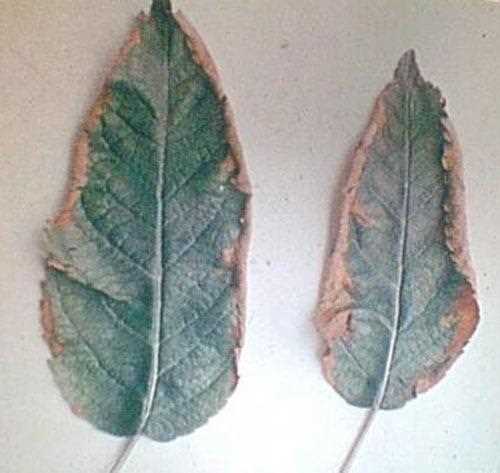
One of the most important steps in preventing potassium deficiency in apple trees is to conduct regular soil testing. This will help you determine the current levels of potassium in your soil and allow you to take appropriate action to address any deficiencies.
2. Fertilizer Application
Applying the right type and amount of fertilizer can help prevent potassium deficiency in apple trees. Look for fertilizers specifically formulated for fruit trees, as these will contain the necessary nutrients, including potassium, in the right amounts.
It’s important to follow the recommended application rates and timing guidelines provided by the fertilizer manufacturer. Overapplication of potassium can lead to other nutrient imbalances, so it’s essential to apply the correct amount.
3. Mulching
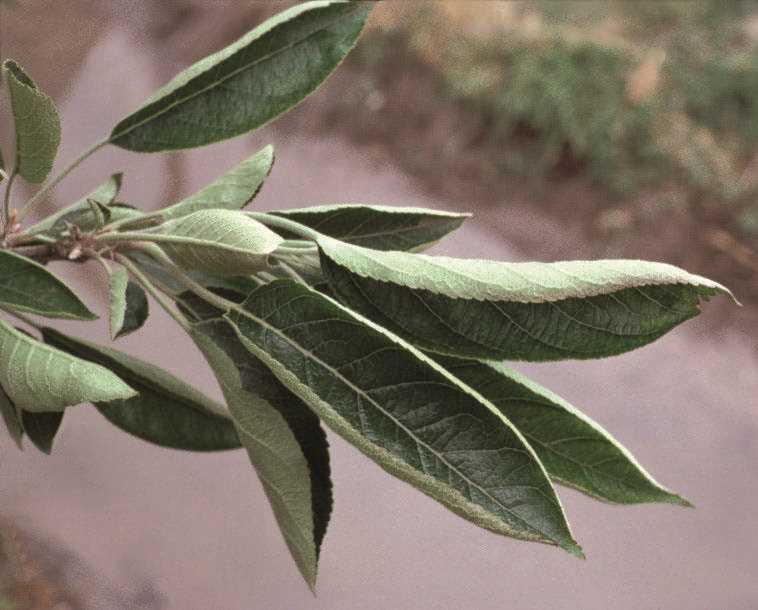
Mulching your apple trees can help prevent potassium deficiency by reducing moisture loss and providing a steady supply of organic matter. Organic mulch, such as wood chips or straw, can help improve soil structure and nutrient availability, including potassium.
Apply a layer of mulch around the base of the apple tree, making sure to leave a small gap around the trunk to prevent rot. This will help retain soil moisture and reduce competition from weeds, which can deplete potassium levels in the soil.
4. Proper Irrigation
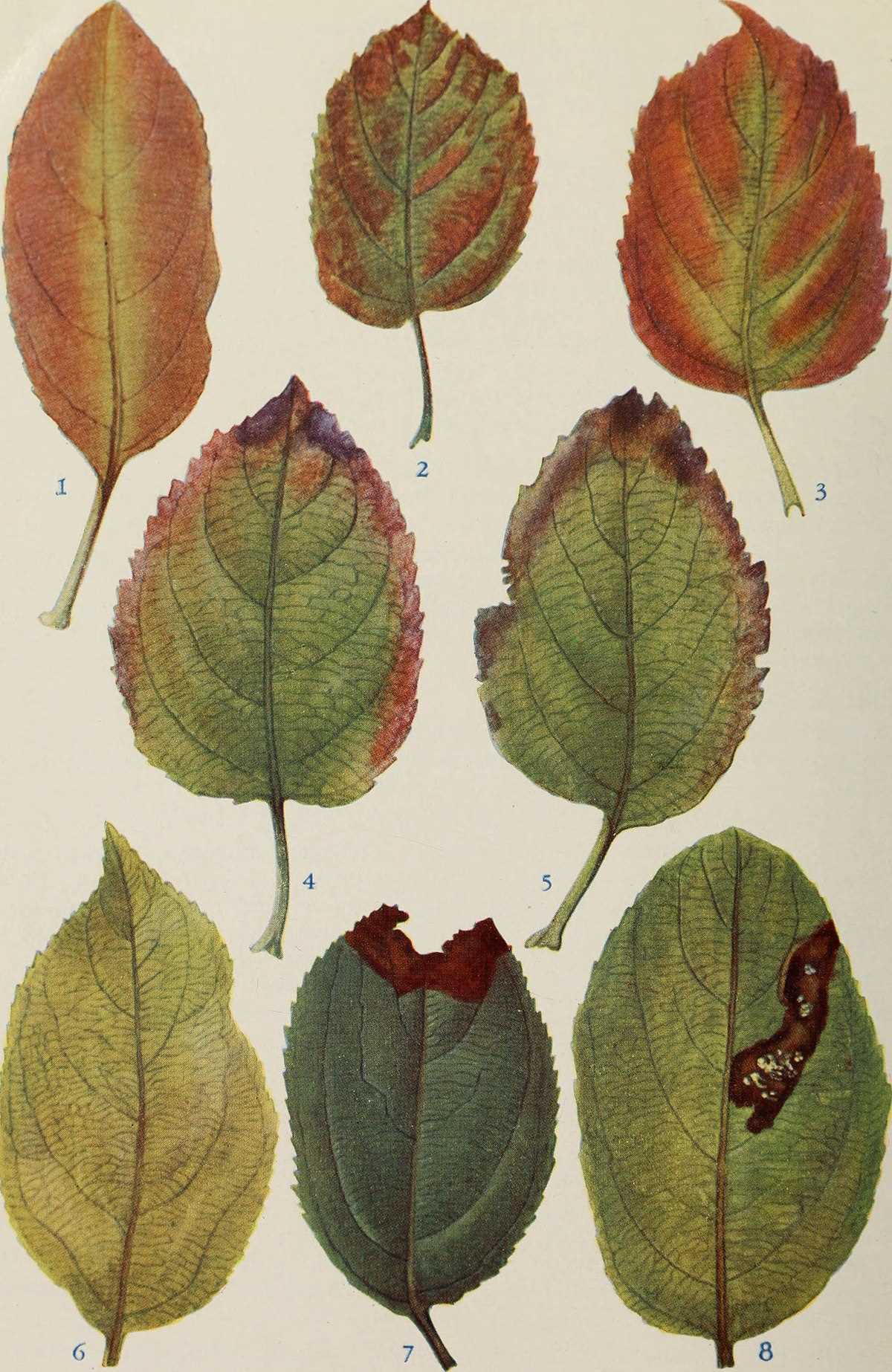
Watering your apple trees correctly is essential for preventing potassium deficiency. Apple trees require consistent moisture, but overwatering can lead to leaching of nutrients, including potassium, from the soil.
Avoid frequent, shallow watering and instead water deeply and infrequently to encourage root growth and nutrient uptake. Using a drip irrigation system can help ensure water is delivered directly to the tree’s root zone, avoiding excess water loss.
5. Crop Rotation
Rotating crops in your orchard can help prevent potassium deficiency by reducing the buildup of pests, diseases, and nutrient imbalances in the soil. Planting cover crops that are efficient at scavenging and recycling nutrients, such as clover or vetch, can also help maintain soil fertility and potassium levels.
6. Pruning and Thinning
Proper pruning and thinning of your apple trees can help prevent potassium deficiency by improving air circulation and light penetration, which can reduce the risk of fungal diseases. Removing excess branches and fruit clusters will also allow the tree to allocate its resources, including potassium, more efficiently.
7. Monitor and Adjust
Regular monitoring of your apple trees is crucial for preventing potassium deficiency. Keep an eye out for symptoms such as yellowing leaves, stunted growth, and poor fruit production. If symptoms are present, adjust your fertilization and irrigation practices accordingly to address any nutrient imbalances.
It’s also a good practice to keep a record of your orchard’s nutrient management over time, allowing you to track any improvements or adjustments that need to be made to prevent potassium deficiency in the future.
Conclusion
By following these preventive measures, you can help ensure your apple trees have adequate potassium levels and thrive. Regular soil testing, proper fertilization, mulching, irrigation, crop rotation, pruning, and monitoring are all essential in maintaining optimal potassium levels and preventing deficiency in your apple trees.
Question-answer:
What are the signs of potassium deficiency in apple trees?
Signs of potassium deficiency in apple trees include yellowing or browning of the edges of older leaves, reduced growth and vigor, smaller and fewer fruits, and increased susceptibility to diseases and pests.
How can I tell if my apple tree has a potassium deficiency?
You can tell if your apple tree has a potassium deficiency by observing the appearance of the leaves. Look for yellowing or browning of the edges of older leaves, as well as reduced growth and vigor. Additionally, smaller and fewer fruits and increased susceptibility to diseases and pests can also indicate a potassium deficiency.
What causes potassium deficiency in apple trees?
Potassium deficiency in apple trees can be caused by a variety of factors. These include poor soil conditions with low potassium levels, excessive leaching of potassium from the soil due to heavy rainfall or over-watering, and competition from weeds or other plants for available potassium.
How can I correct potassium deficiency in my apple trees?
To correct potassium deficiency in apple trees, you can apply potassium-rich fertilizers or amendments to the soil. This can include organic options such as compost or manure, as well as synthetic fertilizers specifically formulated for apple trees. It’s also important to ensure proper watering and mulching practices to maintain an optimal growing environment.
Can potassium deficiency in apple trees be prevented?
Yes, potassium deficiency in apple trees can be prevented by conducting regular soil tests to check for nutrient levels, including potassium. If the tests indicate low levels of potassium, you can proactively apply potassium-rich fertilizers or amendments to the soil before deficiencies occur. Additionally, maintaining proper watering and mulching practices can help prevent leaching of potassium from the soil.
What are some other nutrients that apple trees require?
In addition to potassium, apple trees require several other nutrients for healthy growth and fruit production. These include nitrogen, phosphorus, calcium, magnesium, and trace elements like iron, zinc, and manganese. It’s important to provide a balanced nutrition program to address all of these nutrient requirements.







